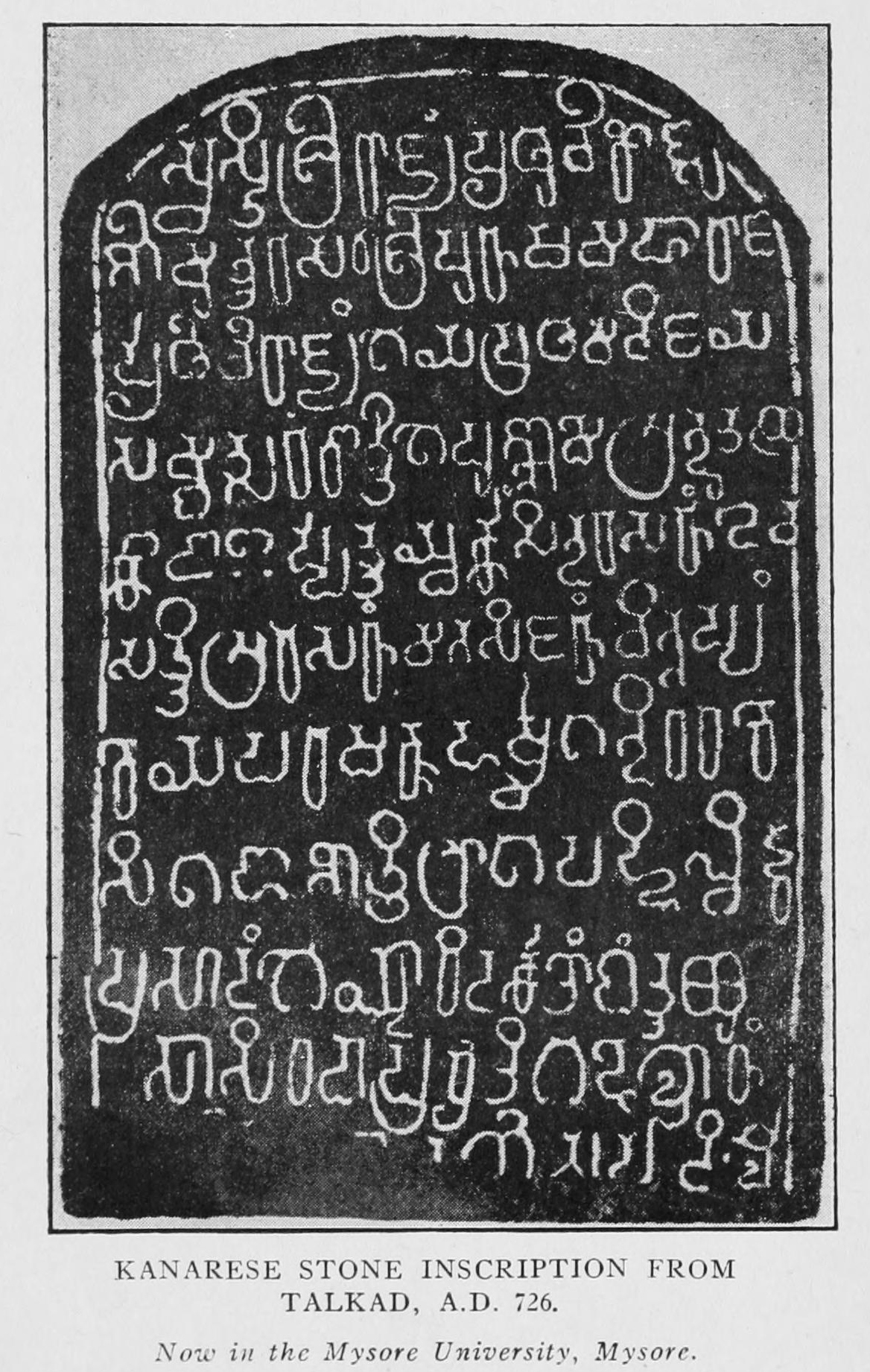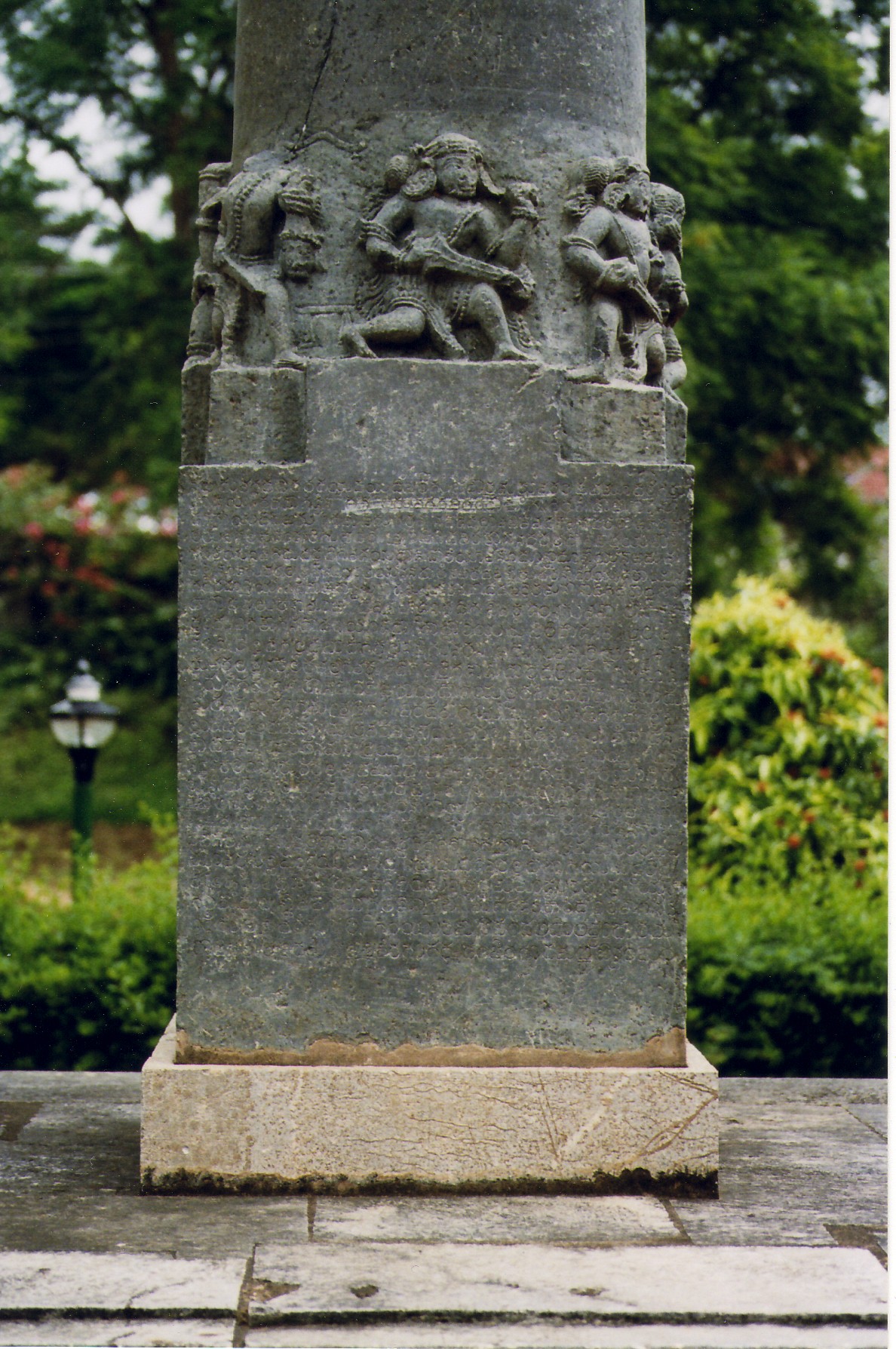|
Nripa Kama II
Nripa Kama II (r. 1026–1047 CE) was an early king of the Hoysala Empire from the Malnad region of Karnataka and was possibly a vassal of the Western Ganga Dynasty Western Ganga was an important ruling dynasty of ancient Karnataka in India which lasted from about 350 to 1000 CE. They are known as "Western Gangas" to distinguish them from the Eastern Gangas who in later centuries ruled over Kalinga (m ... and fought many wars against the Cholas.Seetharam Jagirdhar, M.N. Prabhakar, B.S. Krishnaswamy Iyengar in Kamath (2001), p123 Thought unable to rout the Cholas from southern regions of present-day Karnataka, he successfully ruled some regions in the Malnad area. Citations Sources * Suryanath U. Kamath (1980), A Concise history of Karnataka from pre-historic times to the present, Jupiter books, MCC, Bangalore, 1980 (Reprinted 2001, 2002) OCLC: 7796041 1047 deaths Hoysala kings Hindu monarchs 11th-century Indian monarchs {{India-royal-stub ... [...More Info...] [...Related Items...] OR: [Wikipedia] [Google] [Baidu] |
Hoysala Empire
The Hoysala Empire was a Kannada people, Kannadiga power originating from the Indian subcontinent that ruled most of what is now Karnataka, India, Karnataka between the 10th and the 14th centuries. The capital of the Hoysalas was initially located at Belur, Karnataka, Belur, but was later moved to Halebidu. The Hoysala rulers were originally from Malenadu, an elevated region in the Western Ghats. In the 12th century, taking advantage of the internecine warfare between the Western Chalukya Empire and Kalachuris of Kalyani, the Hoysalas annexed areas of present-day Karnataka and the fertile areas north of the Kaveri delta in present-day Tamil Nadu. By the 13th century, they governed most of Karnataka, minor parts of Tamil Nadu and parts of western Andhra Pradesh and Telangana in the Deccan Plateau. The Hoysala era was an important period in the development of South Indian art, architecture, and religion. The empire is remembered today primarily for Hoysala architecture; 100 survi ... [...More Info...] [...Related Items...] OR: [Wikipedia] [Google] [Baidu] |
Vinayaditya (Hoysala Dynasty)
Vinayaditya (), an able Jain king of the Hoysala Empire,Kamath (1980), p.124 who distinguished himself as an able feudatory of the Kalyani Chalukyas during his long reign. He helped bring many small Malnad chiefs like the Kongalvas, Chengalvas, Santharas of Humcha Shimoga and the Kadambas of Bayalnadu (Vainadu) under control. After the complete disappearance of the Gangas during Chola occupation of Gangavadi, Vinayaditya brought some small portions of Gangavadi under his control. He was either a brother-in-law or father-in-law of Chalukya Someshvara I. Vinayaditya conquered and ruled over South Kanara and Mysore. He was a great builder of cities and towns. He was succeeded by his grandson Veera Ballala I as Vinayaditya's son Ereyanga Ereyanga (r. 1098–1102 CE) was the son of Vinayaditya and distinguished himself as a Chalukya feudatory during their campaigns against Dhara of Malwa. Though his rule as a monarch of Hoysala Empire was short, he served his father as the ... [...More Info...] [...Related Items...] OR: [Wikipedia] [Google] [Baidu] |
Jainism
Jainism ( ), also known as Jain Dharma, is an Indian religions, Indian religion. Jainism traces its spiritual ideas and history through the succession of twenty-four tirthankaras (supreme preachers of ''Dharma''), with the first in the current time cycle being Rishabhadeva, whom the tradition holds to have lived millions of years ago, the twenty-third ''tirthankara'' Parshvanatha, whom historians date to the 9th century BCE, and the twenty-fourth ''tirthankara'' Mahāvīra, Mahavira, around 600 BCE. Jainism is considered to be an eternal ''dharma'' with the ''tirthankaras'' guiding every time cycle of the Jain cosmology, cosmology. The three main pillars of Jainism are ''Ahimsa in Jainism, ahiṃsā'' (non-violence), ''anekāntavāda'' (non-absolutism), and ''aparigraha'' (asceticism). Jain monks, after positioning themselves in the sublime state of soul consciousness, take five main vows: ''ahiṃsā'' (non-violence), ''satya'' (truth), ''Achourya, asteya'' (not stealing), ''b ... [...More Info...] [...Related Items...] OR: [Wikipedia] [Google] [Baidu] |
Malnad
Malnad (; Malēnādu) is a region in the state of Karnataka in India. Malenadu covers the western and eastern slopes of the Western Ghats or Sahyadri mountain range, and is roughly 100 kilometers in width. Malnadis a region of Karnataka state in South India. Malnad covers the western and eastern slopes of the Western Ghats, roughly 100 km in width. It is a hilly terrain and comes under the heavy rain fall belt. The Malenadu region is humid and has an annual rainfall of 1000 to 3800 mm. Agumbe which is in Shivamogga district receives highest rainfall in Karnataka (close to 10000 mm) and is also known as Karnataka's Cherrapunji. In Malnad area the villages are scattered to lying in remote areas .This region in the state poses special problems of development mainly due to peculiar settlement, sparse population, topography, dense forest, numerous, rivulets etc. In order to hasten the development of this area, Malnad Area Development Board was created as per Malnad Area develo ... [...More Info...] [...Related Items...] OR: [Wikipedia] [Google] [Baidu] |
Western Ganga Dynasty
Western Ganga was an important ruling dynasty of ancient Karnataka in India which lasted from about 350 to 1000 CE. They are known as "Western Gangas" to distinguish them from the Eastern Gangas who in later centuries ruled over Kalinga (modern Odisha and Northern Andhra Pradesh). The general belief is that the Western Gangas began their rule during a time when multiple native clans asserted their freedom due to the weakening of the Pallava empire in South India, a geo-political event sometimes attributed to the southern conquests of Samudra Gupta. The Western Ganga sovereignty lasted from about 350 to 550 CE, initially ruling from Kolar and later, moving their capital to Talakadu on the banks of the Kaveri River in modern Mysore district. After the rise of the imperial Chalukyas of Badami, the Gangas accepted Chalukya overlordship and fought for the cause of their overlords against the Pallavas of Kanchi. The Chalukyas were replaced by the Rashtrakutas of Manyakheta in 75 ... [...More Info...] [...Related Items...] OR: [Wikipedia] [Google] [Baidu] |
Hoysala
The Hoysala Empire was a Kannada people, Kannadiga power originating from the Indian subcontinent that ruled most of what is now Karnataka, India, Karnataka between the 10th and the 14th centuries. The capital of the Hoysalas was initially located at Belur, Karnataka, Belur, but was later moved to Halebidu. The Hoysala rulers were originally from Malenadu, an elevated region in the Western Ghats. In the 12th century, taking advantage of the internecine warfare between the Western Chalukya Empire and Kalachuris of Kalyani, the Hoysalas annexed areas of present-day Karnataka and the fertile areas north of the Kaveri delta in present-day Tamil Nadu. By the 13th century, they governed most of Karnataka, minor parts of Tamil Nadu and parts of western Andhra Pradesh and Telangana in the Deccan Plateau. The Hoysala era was an important period in the development of South Indian art, architecture, and religion. The empire is remembered today primarily for Hoysala architecture; 100 survi ... [...More Info...] [...Related Items...] OR: [Wikipedia] [Google] [Baidu] |
1047 Deaths
1 (one, unit, unity) is a number representing a single or the only entity. 1 is also a numerical digit and represents a single unit of counting or measurement. For example, a line segment of ''unit length'' is a line segment of length 1. In conventions of sign where zero is considered neither positive nor negative, 1 is the first and smallest positive integer. It is also sometimes considered the first of the infinite sequence of natural numbers, followed by 2, although by other definitions 1 is the second natural number, following 0. The fundamental mathematical property of 1 is to be a multiplicative identity, meaning that any number multiplied by 1 equals the same number. Most if not all properties of 1 can be deduced from this. In advanced mathematics, a multiplicative identity is often denoted 1, even if it is not a number. 1 is by convention not considered a prime number; this was not universally accepted until the mid-20th century. Additionally, 1 is the ... [...More Info...] [...Related Items...] OR: [Wikipedia] [Google] [Baidu] |
Hoysala Kings
The Hoysala Empire was a Kannadiga power originating from the Indian subcontinent that ruled most of what is now Karnataka between the 10th and the 14th centuries. The capital of the Hoysalas was initially located at Belur, but was later moved to Halebidu. The Hoysala rulers were originally from Malenadu, an elevated region in the Western Ghats. In the 12th century, taking advantage of the internecine warfare between the Western Chalukya Empire and Kalachuris of Kalyani, the Hoysalas annexed areas of present-day Karnataka and the fertile areas north of the Kaveri delta in present-day Tamil Nadu. By the 13th century, they governed most of Karnataka, minor parts of Tamil Nadu and parts of western Andhra Pradesh and Telangana in the Deccan Plateau. The Hoysala era was an important period in the development of South Indian art, architecture, and religion. The empire is remembered today primarily for Hoysala architecture; 100 surviving temples are scattered across Karnataka. Well ... [...More Info...] [...Related Items...] OR: [Wikipedia] [Google] [Baidu] |
Hindu Monarchs
Hindus (; ) are people who religiously adhere to Hinduism.Jeffery D. Long (2007), A Vision for Hinduism, IB Tauris, , pages 35–37 Historically, the term has also been used as a geographical, cultural, and later religious identifier for people living in the Indian subcontinent. The term ''"Hindu"'' traces back to Old Persian which derived these names from the Sanskrit name ''Sindhu'' (सिन्धु ), referring to the river Indus. The Greek cognates of the same terms are "''Indus''" (for the river) and "''India''" (for the land of the river). The term "''Hindu''" also implied a geographic, ethnic or cultural identifier for people living in the Indian subcontinent around or beyond the Sindhu (Indus) River. By the 16th century CE, the term began to refer to residents of the subcontinent who were not Turkic or Muslims. Hindoo is an archaic spelling variant, whose use today is considered derogatory. The historical development of Hindu self-identity within the local In ... [...More Info...] [...Related Items...] OR: [Wikipedia] [Google] [Baidu] |



.jpg)